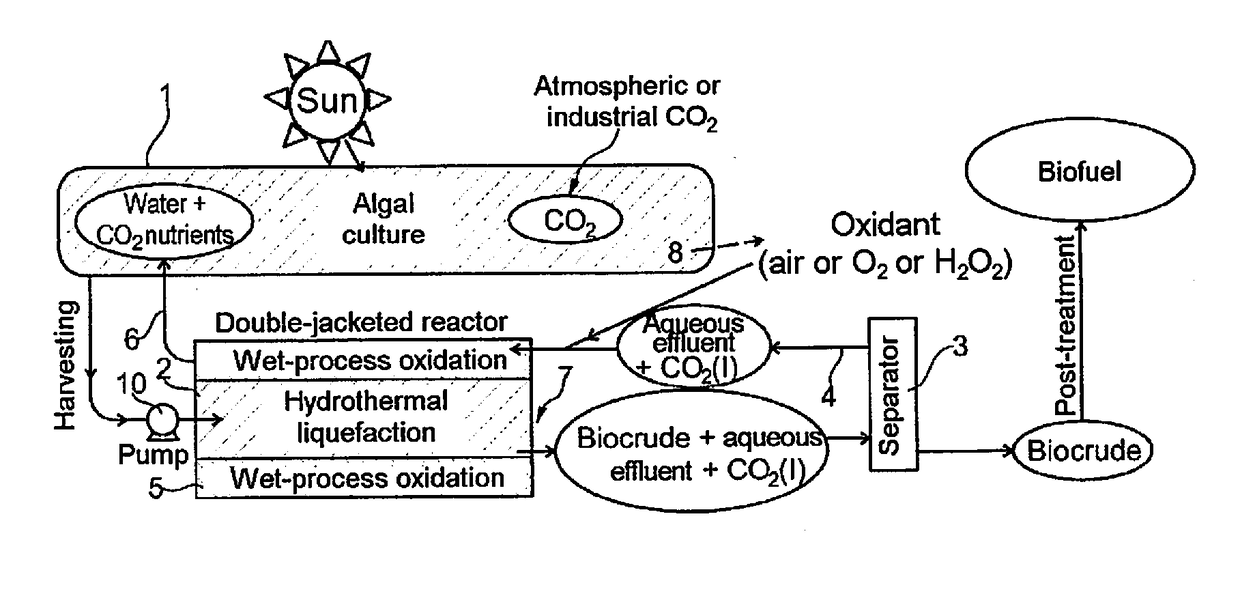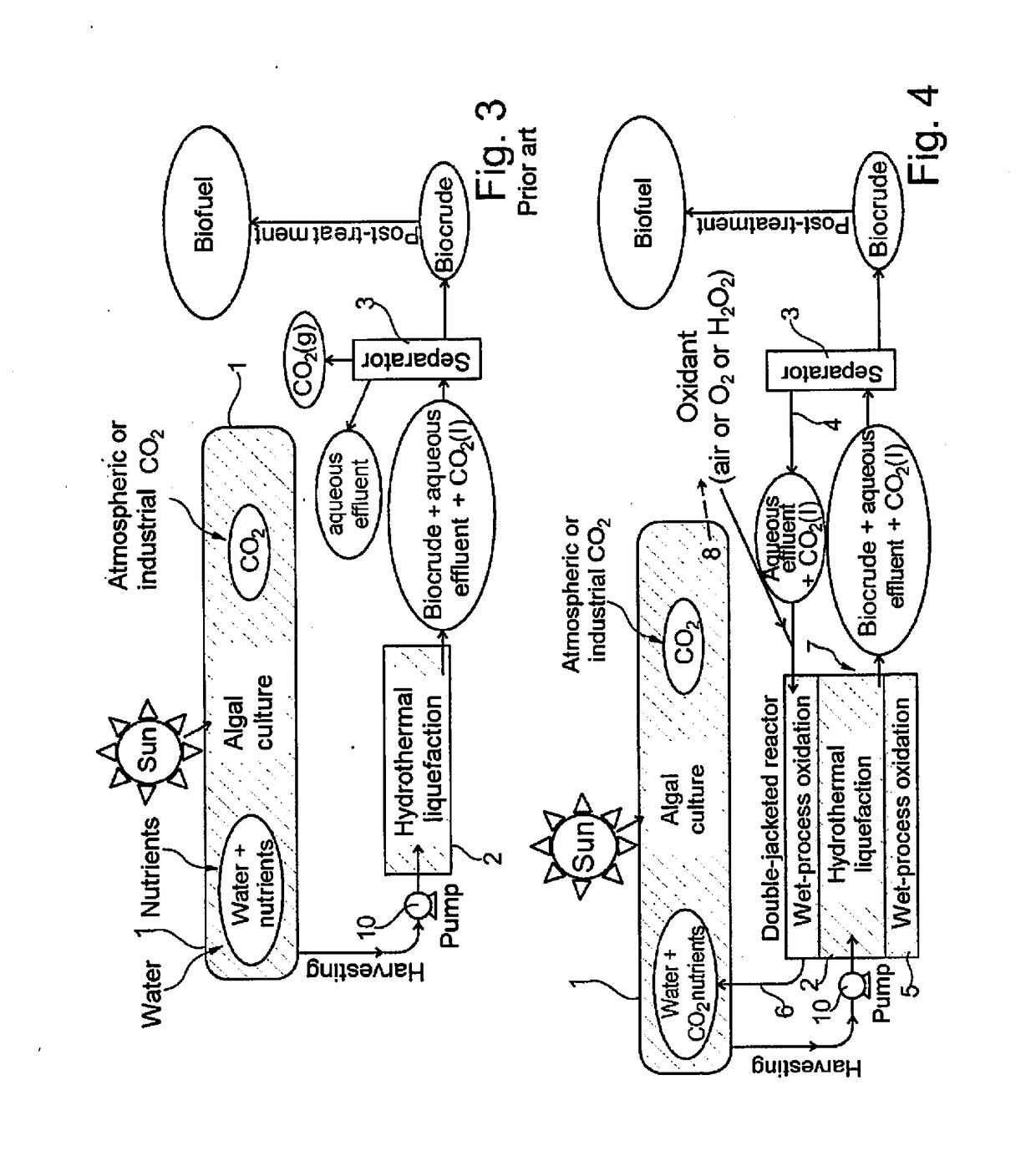Method for converting algal biomass into a gas or into biocrude by hydrothermal gasification or hydrothermal liquefaction, respectively
a technology of algal biomass and hydrothermal liquefaction, which is applied in the direction of gasification process details, liquid hydrocarbon mixture production, combustible gas production, etc., can solve the problems of lipid accumulation in cells, the method of culture of photosynthetic microorganisms has not yet reached the stage of industrial maturity, and the cost of production
- Summary
- Abstract
- Description
- Claims
- Application Information
AI Technical Summary
Benefits of technology
Problems solved by technology
Method used
Image
Examples
Embodiment Construction
[0069]Other advantages and features of the invention will become clearer on reading the detailed description of the invention given for purposes of illustration and nonlimiting, referring to the following figures, where:
[0070]FIG. 1 is a schematic view of an example of a system employing the continuous process for culture of algal biomass and conversion of the algal biomass cultivated by hydrothermal liquefaction into biocrude according to the invention;
[0071]FIG. 2 is a perspective schematic view of an advantageous embodiment of a part of the system according to the invention with a double-jacketed reactor;
[0072]FIG. 3 is a schematic view of an example of a system using a continuous process for culture of algal biomass and conversion of the algal biomass cultivated by hydrothermal liquefaction into biocrude according to the state of the art;
[0073]FIG. 4 is a schematic view of an example of a system using a continuous process according to the invention and applied directly to the sy...
PUM
 Login to View More
Login to View More Abstract
Description
Claims
Application Information
 Login to View More
Login to View More - R&D
- Intellectual Property
- Life Sciences
- Materials
- Tech Scout
- Unparalleled Data Quality
- Higher Quality Content
- 60% Fewer Hallucinations
Browse by: Latest US Patents, China's latest patents, Technical Efficacy Thesaurus, Application Domain, Technology Topic, Popular Technical Reports.
© 2025 PatSnap. All rights reserved.Legal|Privacy policy|Modern Slavery Act Transparency Statement|Sitemap|About US| Contact US: help@patsnap.com



